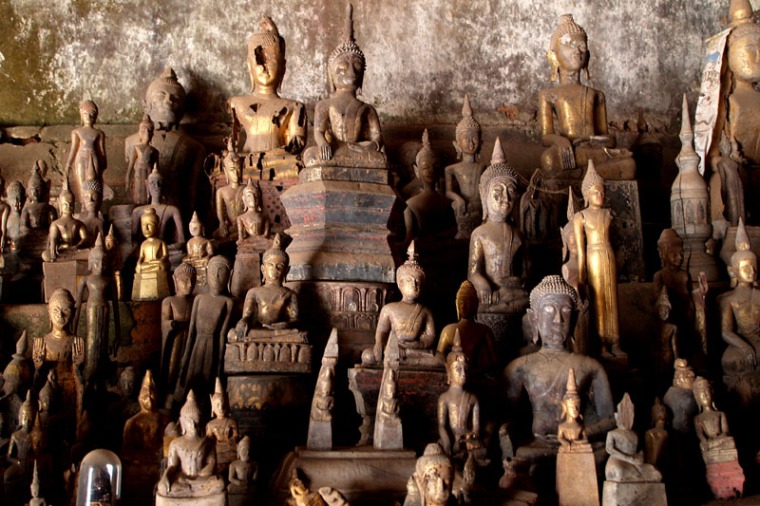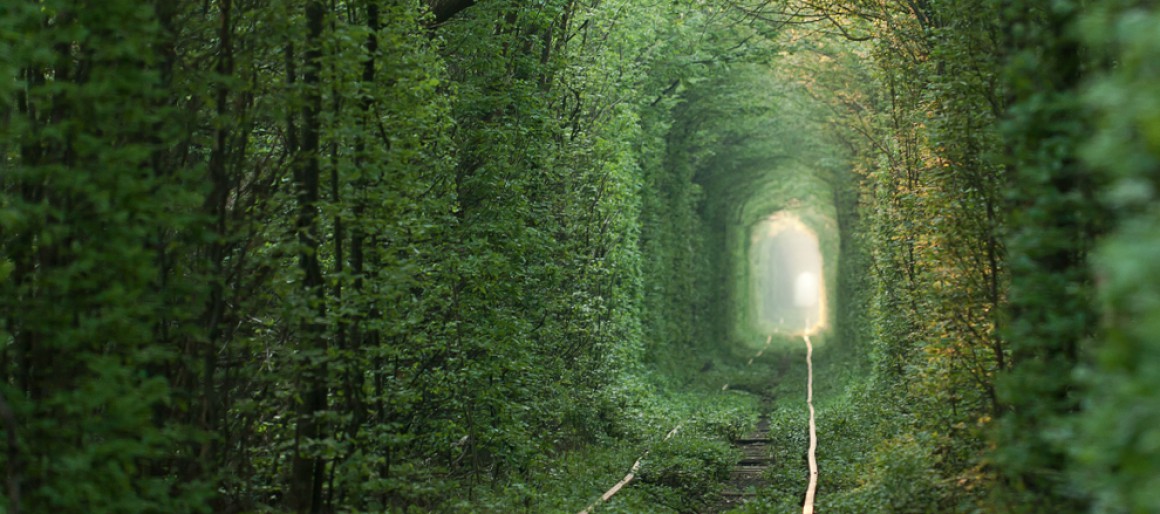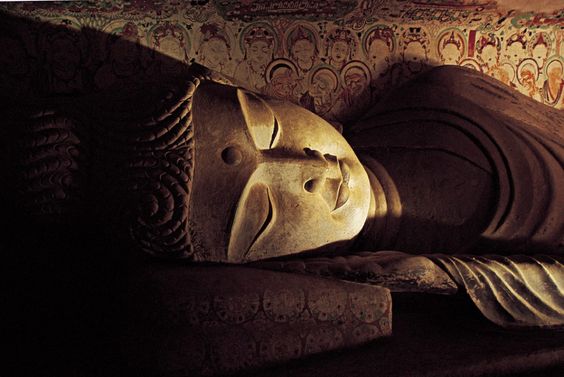
Qianfodong, or the Caves of the Thousand Buddhas, is a cliff located in the desert just ten miles out from one the large oasis towns along the Silk Road called Dunhuang. The caves began one night in 366 AD when a wondering monk named Yuezan became inspired by images of a thousand Buddhas in a cliff and dug out a small meditation cell no larger than a coffin. Others quickly followed suit and these small caverns were used as places for prayer and meditation for those taking the treacherous journey across the Taklimakan Desert. Soon larger caves were being carved out for public devotions and these shrines were soon filled with images of the Buddha and other adornments. These early caves inspired the name the Caves of the Thousand Buddhas. These caves are a beautiful example of the evolution of Chinese art and the integration of Buddhism into Chinese culture.

As time went on, monks who lived in smaller caves to the right of the cliff, began to fill the Mogao caves with sculptures, paintings, banners, and sutras. These paintings and statues consisted of delicately created apsaras (heavenly nymphs), celestial musicians, depictions of nirvana, and Thousands of Buddhas depicted in large statues as well as filled in a thousand times in any unused space of the cave walls. Among these religious depictions “were earthier details familiar to any Silk Road traveler: Central Asian merchants with long noses and floppy hats, wizened Indian monks in white robes, Chinese peasants working the land” (Larmer). Due to being buried in desert sand, these caves have stood the test of time with their thin layers of paint escaping the dangers of war and pillage, nature and neglect.

Amidst all the wonders of the many caverns, one very specific cave, number 17, held hidden treasures for hundreds of years. A secret door was concealed by a statue of Hong Bian, a prominent ninth century monk (shown below). This hidden cave was finally opened up in 1900 by Wang Yuanlu, the caves self-appointed guardian, who discovered thousands of Buddhist texts and paintings crammed into this small room from floor to ceiling. He tried to give some texts to local officials in order to try to receive a donation but was only ordered to seal up the cave once again. It was not until a Hungarian born scholar, Aurel Stein, arrived that the real contents of this cave would be revealed. There were Manichaeism, Nestorian, Jewish, Taoist, Confucian and secular texts relating to the economy, social structure, and history of the time. These texts also came in many different languages including Chinese, Sanskrit, Uighur, Tibetan, Khotanese, Kuchean, Sogdian, and Hebrew. This carefully constructed cave was clearly a planned operation and not rushed in a time of invasion. Studies suggest this cave was walled up sometime before Tanguts invasion when they established the Xixia kingdom in 1038. The reasons for enclosing this cave could have been for fear of military action as well as a need to store and preserve these worn scrolls. Interestingly, the figure of Hong Bian guarding this entrance was actually originally installed in a cave higher up soon after his death in the mid-ninth century. Read more about this discovery on my friend Kayla’s Explore Religion Blog.

Sources:
Larmer, Brook. “Caves of Faith.” National Geographic June 2010: Vol. 217, Issue 6. Print.
Wood, Frances. The Silk Road: Two Thousand Years in the Heart of Asia. Berkeley and Los Angeles: U of California P, 2002. Print.





 The Mogao Caves or Mogao Ku is one of five Buddhist cave temple complexes located along the Silk Road that collectively make up Dunhuang caves. The Dunhuang Caves are often called the Caves of the Thousand Buddhas. Mogao Ku has the largest known collection of Buddhist art in China, including more than 45,000 square meters of murals and more than 2,000 painted statues, dated from the 4th through fourteenth centuries AD. When the caves first were being made, they were used mostly for meditation but as time went on the caves became a place to teach and convert others to Buddhism and offered an extensive library of parable and sutras.
The Mogao Caves or Mogao Ku is one of five Buddhist cave temple complexes located along the Silk Road that collectively make up Dunhuang caves. The Dunhuang Caves are often called the Caves of the Thousand Buddhas. Mogao Ku has the largest known collection of Buddhist art in China, including more than 45,000 square meters of murals and more than 2,000 painted statues, dated from the 4th through fourteenth centuries AD. When the caves first were being made, they were used mostly for meditation but as time went on the caves became a place to teach and convert others to Buddhism and offered an extensive library of parable and sutras.
